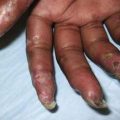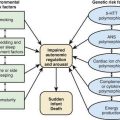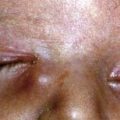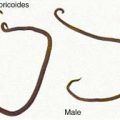Chapter 252 Respiratory Syncytial Virus
Respiratory syncytial virus (RSV) is the major cause of bronchiolitis (Chapter 383) and viral pneumonia in children <1 yr of age and is the most important respiratory tract pathogen of early childhood.
Etiology
RSV is an enveloped RNA virus with a single-stranded negative-sense genome that replicates entirely in the cytoplasm of infected cells and matures by budding from the apical surface of the cell membrane. Because this virus has a nonsegmented genome, it cannot undergo antigenic shift by reassortment like the influenza viruses do. The virus belongs to the family Paramyxoviridae, along with parainfluenza and measles viruses, and is in the subfamily Pneumovirinae, which also contains the human metapneumovirus (Chapter 253). It is the only member of the genus Pneumovirus that infects humans. There are 2 antigenic subgroups of RSV, their differentiation based primarily on variation in 1 of the 2 surface proteins, the G glycoprotein that is responsible for attachment. This antigenic variation caused by point mutations due to infidelity of the virus RNA polymerase may to some degree contribute to the frequency with which RSV re-infects children and adults.
Diagnosis
The most important diagnostic concern is to identify bacterial or chlamydial involvement. When bronchiolitis is not accompanied by infiltrates on chest radiographs, there is little likelihood of a bacterial component. In infants 1-4 mo of age, interstitial pneumonitis may be caused by Chlamydia trachomatis (Chapter 218). With C. trachomatis pneumonia there may be a history of conjunctivitis, and the illness tends to be of subacute onset. Coughing and inspiratory crackles may be prominent; wheezing is not. Fever is usually absent.
Boyce TG, Mellen BG, Mitchel EFJr, et al. Rates of hospitalization for respiratory syncytial virus infection among children in Medicaid. J Pediatr. 2000;137:865-870.
Forster J, Ihorst G, Rieger CHL, et al. Prospective population-based study of viral lower respiratory tract infections in children under 3 years of age (the PRI.DE study). Eur J Pediatr. 2004;163:709-716.
Glezen WP, Paredes A, Allison JE, et al. Risk of respiratory syncytial virus infection for infants from low-income families in relationship to age, sex, ethnic group and maternal antibody level. J Pediatr. 1981;98:708-715.
Hall CB. Respiratory syncytial virus in young children. Lancet. 2010;375:1500-1502.
Hall CB, Douglas RGJr, Geiman JM, et al. Nosocomial respiratory syncytial virus infections. N Engl J Med. 1975;293:1343-1346.
Hall CB, Weinberg GA, Iwane MK, et al. The burden of respiratory syncytial virus infection in young children. N Engl J Med. 2009;360:588-598.
Henderson FW, Collier AM, Clyde WAJr, et al. Respiratory-syncytial-virus infections, reinfections and immunity: a prospective, longitudinal study in young children. N Engl J Med. 1979;300:530-534.
Iwane MK, Weinberg GA, Blunkin MK, et al. The burden of respiratory syncytial virus infection in young children. N Engl J Med. 2009;360:588-598.
Johnson JE, Gonzales RA, Olson SJ, et al. The histopathology of fatal untreated human respiratory syncytial virus infection. Mod Pathol. 2007;20:108-119.
Kern S, Uhl M, Berner R, et al. Respiratory syncytial virus infection of the lower respiratory tract: radiological findings in 108 children. Eur Radiol. 2001;11:2581-2584.
Klein MI, Bergel E, Gibbons L, et al. Differential gender response to respiratory infections and to the protective effect of breast milk in preterm infants. Pediatrics. 2008;121:e1510-e1516.
Madhi SA, Klugman KP, Vaccine Trialist Group. A role for Streptococcus pneumoniae in virus-associated pneumonia. Nat Med. 2004;10:811-813.
Meissner HC, Long SS. Revised indications for the use of palivizumab and respiratory syncytial virus immune globulin intravenous for the prevention of respiratory syncytial virus infections. Pediatrics. 2003;112:1447-1452.
Melendi GA, Laham FR, Monsalvo AC, et al. Cytokine profiles in the respiratory tract during primary infection with human metapneumovirus, respiratory syncytial virus, or influenza virus in infants. Pediatrics. 2007;120:e410-e415.
Wright PF, Karron RA, Belshe RB, et al. The absence of enhanced disease with wild type respiratory syncytial virus infection occurring after receipt of live, attenuated, respiratory syncytial virus vaccines. Vaccine. 2007;25:7372-7378.







